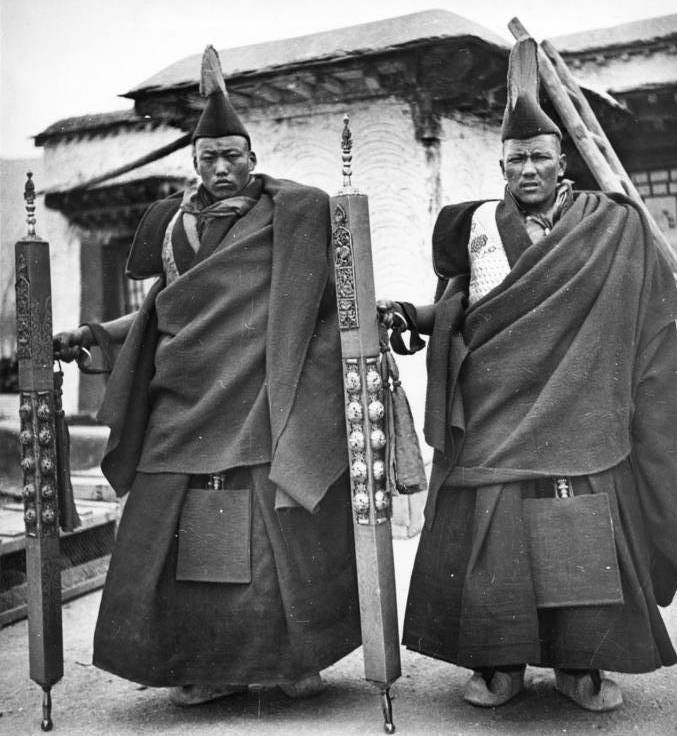The "Thunderbolt Path", Dorjee Lam, is a martial and spiritual tradition from central Tibet. It has been practiced by Tibetan warrior monks (Dop-dops) for centuries. It is a forceful yet fluid art with a no-nonsense type of character.

Dop-dops were renowned for their fighting skills, toughness and bravery. They acted as policemen and bodyguards in the Gerlug monasteries. Their purpose was to protect officials and monks, and to maintain law and order.
They incorporated martial traditions from the nomadic tribes of the northern Tibetan uplands with martial arts from China, India and Mongolia. The diverse origins of the system also resulted in a broad spectrum of weapons methods. Dop-dops, sometimes known as "Punk Monks", also nursed sick monks back to health. They provided a strong arm on behalf of the theocratic authorities of pre-modern Tibet.
The Dop-dops were organised into a number of fraternities, based primarily in the huge monastery complexes of Drepung, Sera and Ganden that surround Lhasa. At certain times throughout the year, the Dop-dops of Deprung and Sera monasteries would compete against one another in events such as horse riding, long jumping and unarmed combat. Many of these bouts were unofficial contests between rival groups and individual members.
Tibet had trade routes with India, Nepal, Bhutan, China and Mongolia. Bandits and robbers would frequently attack the traders as they made their way across these arduous trails. Dop-dops were often employed as bodyguards to safely escort traders through various trade routes in Tibet and many accounts still exist of the bloody encounters which occurred between them and bandits. Arts such as Dorjee Lam were put into practice along these trade routes which allowed for them to be tested in a very real way.
In the nineteenth and twentieth centuries the skills of the Dop-dops spread outside Tibet as they accompanied travelling officials around the world in the role of bodyguards.